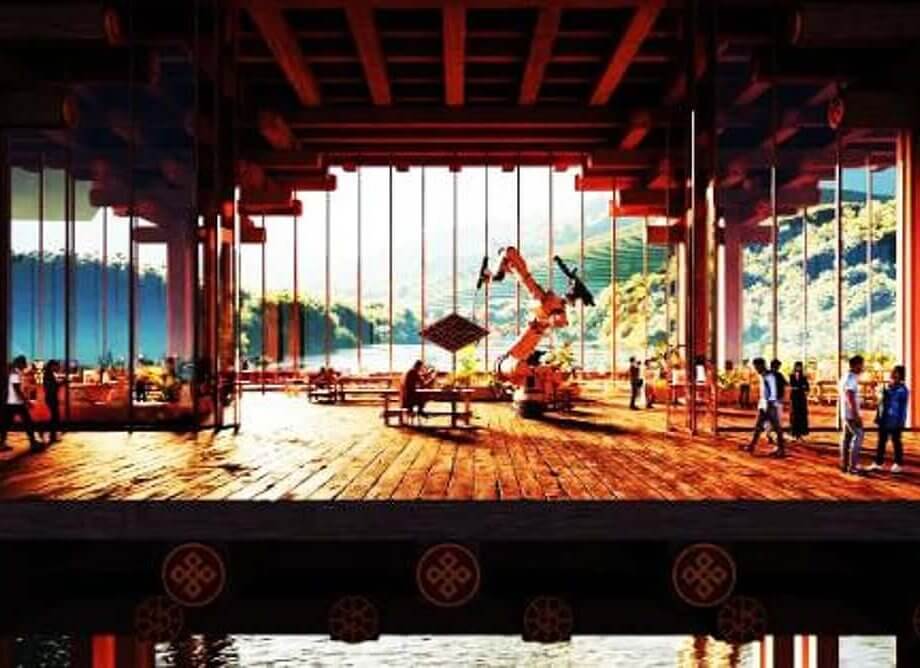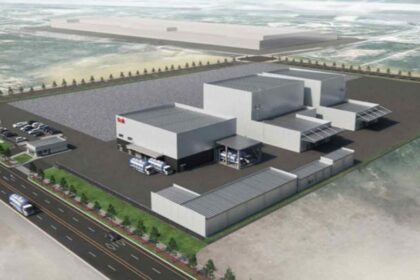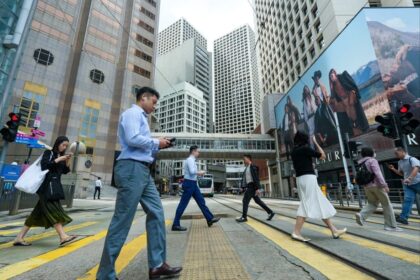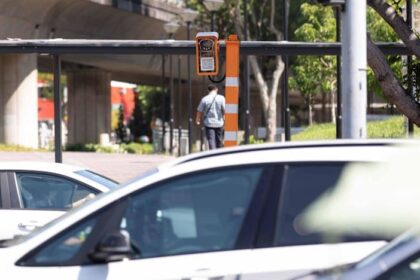The Transformation of Drinchengang: A Royal Vision for Bhutan’s Future
In the heart of Wangdue Phodrang, Bhutan, the centuries-old village of Drinchengang—also known as Rinchengang—stands on the cusp of a historic transformation. Once renowned for its master stone masons who helped shape Bhutan’s iconic dzongs and temples, Drinchengang is now set to become the nation’s first “Innovative Model Village.” This ambitious project, launched under a Royal Initiative, aims to blend the preservation of Bhutan’s rich cultural heritage with digital innovation and sustainable living, offering a blueprint for rural revitalization across the country.
- The Transformation of Drinchengang: A Royal Vision for Bhutan’s Future
- Why Drinchengang? Heritage, Risk, and Opportunity
- The Drinchengang Village Development Project: Phases and Vision
- Preserving Heritage While Embracing Change
- Livelihoods and Sustainability: Farming, Tourism, and Innovation
- Infrastructure and International Support: A Model for Climate Adaptation
- Community Voices: Hopes and Concerns
- Broader Implications: A Blueprint for Rural Bhutan
- In Summary
Drinchengang’s story is deeply intertwined with Bhutan’s history. Established in the 17th century by artisans brought by Zhabdrung Ngawang Namgyel, the village’s distinctive adobe homes and terraced fields have long been celebrated as living relics of Bhutanese architecture and culture. Today, the village comprises 86 households and around 800 residents, spread across 24 acres and divided into two chiwogs: Drinchengang Lho and Drinchengang Jang.
Why Drinchengang? Heritage, Risk, and Opportunity
The selection of Drinchengang as Bhutan’s first model village is both symbolic and practical. Its historical significance as a center of craftsmanship and its status as a heritage site make it an ideal candidate for a project that seeks to honor the past while embracing the future. However, the village’s aging infrastructure has also raised safety concerns. Many of the traditional structures are at risk of collapse, prompting the need for a comprehensive redevelopment that safeguards both residents and heritage.
Residents of Drinchengang have traditionally followed the Maephu tradition, a unique cultural practice where extended families live together under one roof but cook separately. This tradition, along with the village’s compact layout and communal lifestyle, is central to the project’s design philosophy.
The Drinchengang Village Development Project: Phases and Vision
The Drinchengang Village Development Project is structured in multiple phases, each designed to ensure a smooth transition for residents and the preservation of cultural identity. The project officially commenced with a groundbreaking ceremony presided over by the Tsugla Lopen of the Central Monastic Body, underscoring its national importance.
Phase I: Relocation and Infrastructure
The first phase involves relocating the current inhabitants to a new site in Barithang, specifically at Sulalumpa, just a few kilometers from the original village. This move addresses immediate safety concerns and provides an opportunity to upgrade living conditions. Temporary transit camps, supported by His Majesty’s Kidu—a royal welfare initiative—will house residents during the transition. Essential infrastructure such as access roads, water supply, drainage, and electricity are being prioritized to minimize disruption to daily life.
Each family will receive freehold land ownership and a newly constructed home modeled after traditional Drinchengang architecture, blending aesthetic charm with modern construction standards. The relocation site was carefully selected and approved by the Project Steering Committee, with input from local leaders and residents.
Phase II and Beyond: Permanent Homes and Economic Empowerment
Once the initial infrastructure is in place, the construction of permanent homes will begin. The project’s vision extends beyond housing, aiming to create a vibrant, self-sustaining community. Future plans include:
- Eco-tourism: Leveraging Drinchengang’s heritage and scenic beauty to attract visitors and generate income.
- Cultural industries: Supporting traditional crafts and local enterprises that celebrate Bhutanese culture.
- Digital integration: Introducing digital tools and connectivity to empower residents, especially the youth, and bridge the rural-urban divide.
- Community-led enterprises: Encouraging cooperative businesses and participatory governance to ensure long-term sustainability.
Officials and local leaders emphasize that the Drinchengang model is intended as a template for similar projects across Bhutan, offering a balanced approach to rural development that respects tradition while embracing progress.
Preserving Heritage While Embracing Change
One of the project’s core challenges is maintaining Drinchengang’s unique cultural identity amid modernization. The new homes will replicate the traditional adobe style, and communal spaces will be designed to foster the Maephu tradition. The project also seeks to preserve significant historical structures, such as the nearly 300-year-old house that stands as a testament to the village’s legacy.
Residents have expressed a mix of excitement and cautious optimism. While most support the initiative, some have voiced concerns about the current state of the access road to Sulalumpa and the potential impact on their way of life. Project leaders have pledged to address these issues through ongoing consultation and community engagement.
Livelihoods and Sustainability: Farming, Tourism, and Innovation
Drinchengang’s economy has traditionally relied on paddy farming and vegetable cultivation, with terraced fields providing both sustenance and income. However, limited land availability has restricted large-scale agriculture, making diversification essential for long-term prosperity.
The project’s emphasis on eco-tourism and cultural industries is designed to create new opportunities for residents. Plans are underway to introduce an entrance fee for visitors, with the goal of generating revenue to support community initiatives and maintenance. Details of the fee structure and exemptions are still being finalized, reflecting a careful approach to balancing tourism with local needs.
Digital innovation is another pillar of the project. By integrating technology into education, business, and governance, the initiative aims to empower residents—especially younger generations—to participate in Bhutan’s evolving economy without losing touch with their roots.
Infrastructure and International Support: A Model for Climate Adaptation
Drinchengang’s transformation is not occurring in isolation. The village has benefited from international development programs, such as the UN Capital Development Fund’s Local Climate Adaptive Living Facility (LoCAL). Recent investments have improved sanitation and infrastructure, including the construction of stone-paved footpaths and modern drainage systems. These upgrades have enhanced safety, health, and mobility for residents, particularly the elderly and children.
Such projects demonstrate the power of small-scale, locally identified infrastructure improvements to drive broader change. As Sarita Gurung, Gewog Administrative Officer in Thedtsho Gewog, explains:
“With the project, we now have the footpath with stone slabs. We made it like a two-in-one kind of thing where we have the drainage system going underneath and above it we have the pavement with the footpath and the stones slabs. It has immensely benefited the public.”
These efforts are part of a larger movement in Bhutan to integrate climate adaptation into local development, ensuring that rural communities are resilient in the face of changing weather patterns and environmental challenges.
Community Voices: Hopes and Concerns
Throughout the planning and implementation of the Drinchengang Village Development Project, community engagement has been a priority. Residents have participated in consultations and shared their perspectives on the changes ahead. While the promise of improved living conditions and new opportunities is widely welcomed, some villagers are understandably apprehensive about the transition.
Concerns include the adequacy of the access road to the new site, the preservation of communal traditions, and the potential impact of increased tourism. Project leaders have responded by emphasizing transparency, flexibility, and a commitment to addressing issues as they arise.
Local leaders, such as the Toedtsho gup, have played a key role in building consensus and ensuring that the project reflects the community’s aspirations. As one local leader noted:
“We’re not just moving homes; we’re building a future that respects our past.”
Broader Implications: A Blueprint for Rural Bhutan
The Drinchengang model is being closely watched by policymakers, development experts, and rural communities across Bhutan. Its integrated approach—combining heritage conservation, sustainable livelihoods, digital innovation, and community participation—offers valuable lessons for other villages facing similar challenges.
Officials believe that the success of Drinchengang could pave the way for a new era of rural revitalization in Bhutan, where tradition and progress go hand in hand. The project’s phased implementation, emphasis on local ownership, and alignment with national development goals position it as a potential catalyst for broader change.
In Summary
- Drinchengang, a historic village in Wangdue Phodrang, is being redeveloped as Bhutan’s first Innovative Model Village under a Royal Initiative.
- The project blends cultural preservation, digital innovation, and sustainable living, aiming to serve as a template for rural revitalization nationwide.
- Residents are being relocated to a new site with improved infrastructure, freehold land, and homes modeled after traditional architecture.
- Key project components include eco-tourism, cultural industries, digital integration, and community-led enterprises.
- International support and climate adaptation measures have improved sanitation and infrastructure, enhancing quality of life.
- Community engagement and respect for tradition are central to the project’s design and implementation.
- The Drinchengang model is expected to influence future village development projects across Bhutan, balancing heritage with progress.












